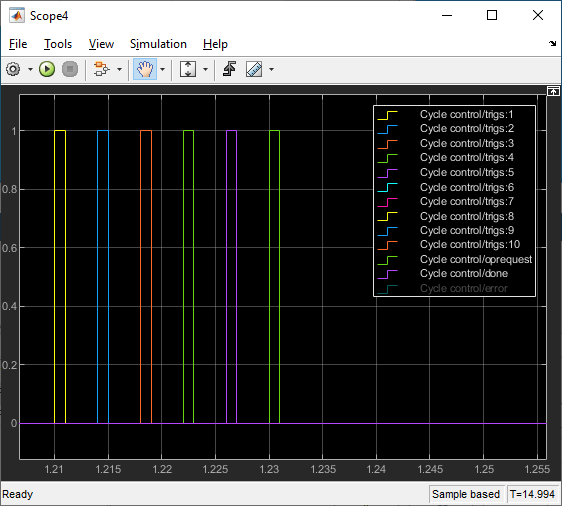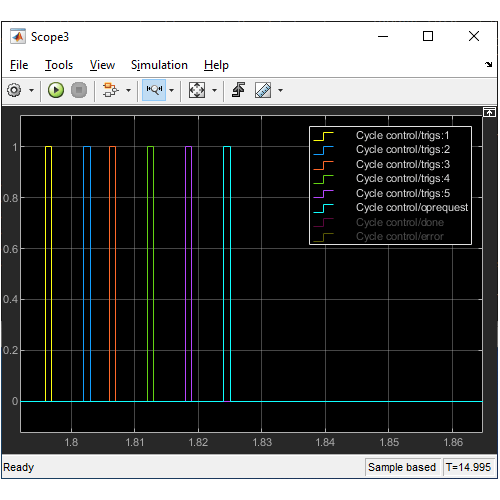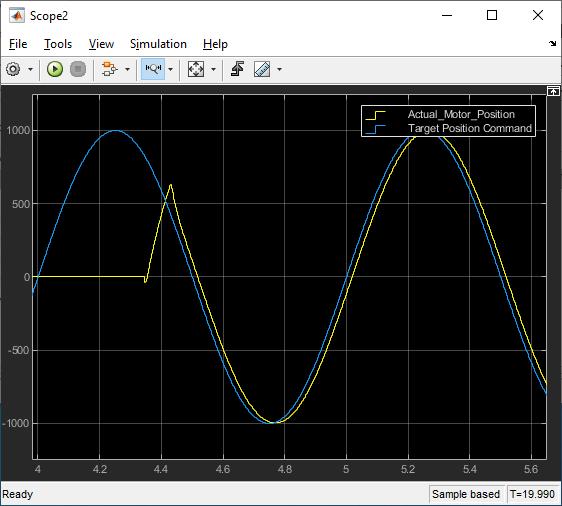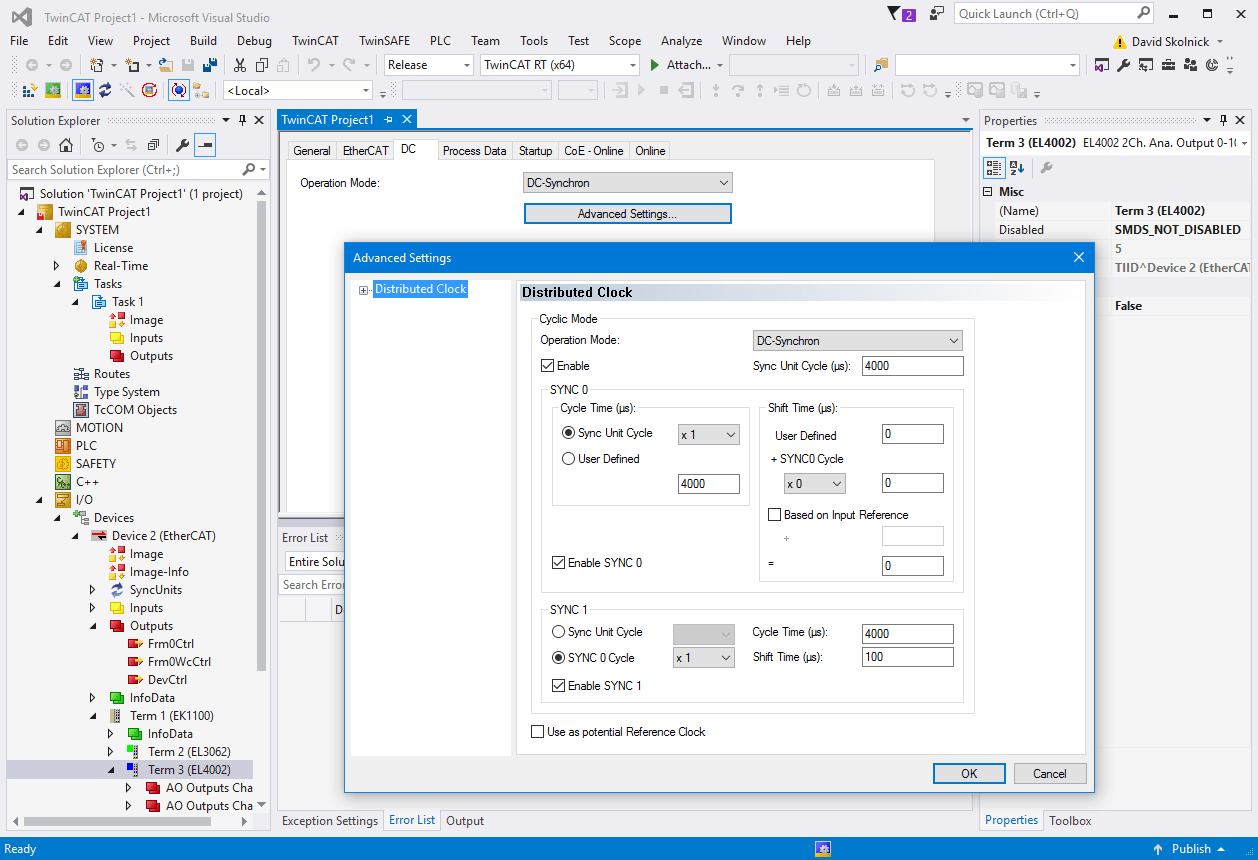EtherCAT
Ethernet for Control Automation (EtherCAT) is an open Ethernet network protocol for real-time
distributed control. See
www.ethercat.org
.
To begin, configure the network by using an EtherCAT network configurator, and then load the configuration into the EtherCAT protocol blocks. The blocks connect to Intel® Ethernet boards that support the EtherCAT protocol and are compatible with PCI-standard bus architectures, such as PCI, PCI Express®, and PXI®.
Simulink® Real-Time™ supports the Beckhoff® TwinCAT® configurator and the Acontis EC-Engineer configurator.
For detailed information about the configurators, see the
manufacturer documentation (
www.beckhoff.com
and
www.acontis.com/en/
). For detailed information about EtherCAT boards, see the manufacturer documentation.
Functions
slrealtime.EtherCAT.filterNotifications | Display EtherCAT notifications in human-readable format |
slrealtime.EtherCAT.getSignalNames | Display EtherCAT notifications in human-readable format |
Blocks
| EtherCAT Init | Initialize EtherCAT main device node with data in the EtherCAT Network Information (ENI) file |
| EtherCAT Get Emergency | Collect emergency messages from the EtherCAT bus (Since R2023b) |
| EtherCAT Get Notifications | Collect notifications from the EtherCAT bus |
| EtherCAT Get Scanbus Error Data | Detects when an EtherCAT device in the model is not responding (Since R2022b) |
| EtherCAT PDO Receive | Receive data from subordinate device represented by process data object |
| EtherCAT PDO Transmit | Send data to subordinate device represented by process data object |
| EtherCAT Sync SDO Upload | Read data synchronously from subordinate device represented by service data object |
| EtherCAT Sync SDO Download | Transmit data synchronously to subordinate device represented by service data object |
| EtherCAT Async SDO Upload | Read data asynchronously from subordinate device represented by service data object |
| EtherCAT Async SDO Download | Transmit data asynchronously to subordinate device represented by service data object |
| EtherCAT Sync SSC/SoE Upload | Read data synchronously from subordinate device represented by service data object |
| EtherCAT Sync SSC/SoE Download | Transmit data synchronously to subordinate device represented by service data object |
| EtherCAT Async SSC/SoE Upload | Read data asynchronously from subordinate device represented by service data object |
| EtherCAT Async SSC/SoE Download | Transmit data asynchronously to subordinate device represented by service data object |
| EtherCAT Get State | Get state of EtherCAT network |
| EtherCAT Set State | Set state of EtherCAT network |
| EtherCAT Get Device State | Get state of EtherCAT network (Since R2021b) |
| EtherCAT Set Device State | Set state of EtherCAT network (Since R2021b) |
Topics
EtherCAT Protocol Models
- Modeling EtherCAT Networks
Learn about Simulink Real-Time support for real-time distributed control with the EtherCAT protocol.
Reference
- EtherCAT Distributed Clock Algorithm
Learn about the EtherCAT main device shift and bus shift modes. - Fixed-Step Size Derivation
Determine the fixed step size for the EtherCAT model and the sample times for key blocks. - EtherCAT Protocol Mapping
Learn about the relationship between the third-party configurator capabilities and Simulink Real-Time capabilities. - EtherCAT Configurator Component Mapping
Learn about the relationship between the third-party configurator components and Simulink Real-Time blocks and block attributes. - EtherCAT Data Types
Learn about the relationship between EtherCAT data types and Simulink Real-Time data types. - EtherCAT Init Block DC Error Values
Learn about the EtherCAT distributed clock error values that the EtherCAT Init block returns. - EtherCAT Error Codes
The Error output for EtherCAT blocks returns an EtherCAT error code. - EtherCAT Init







